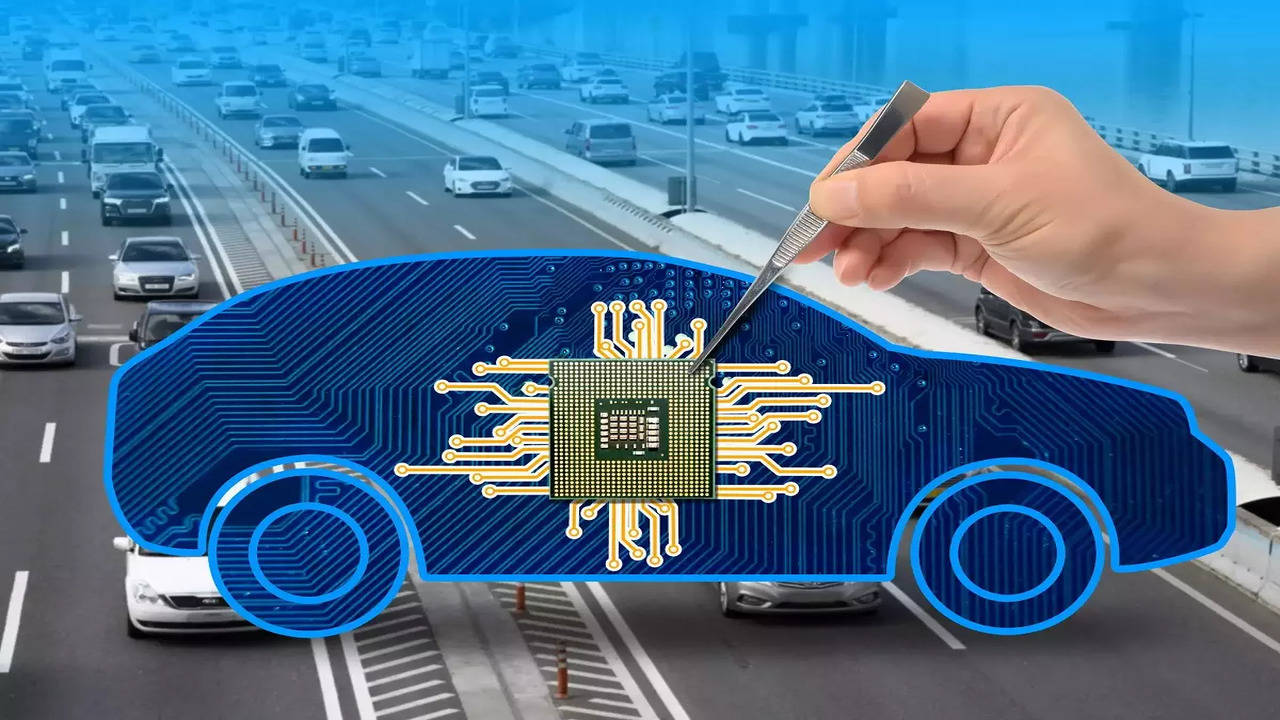Chips have become the backbone of vehicles
3 minute readPublished: Wednesday, May 31, 2023 at 5:41 am

Cars talking to each other, talking to home appliances, talking to the service bay at the workshop, talking to the OEM for diagnostic solutions these are not the future, these are already here. And as cars increasingly become computers on wheels, the demands on semiconductors are growing.EV evangelist and motorhead Subhabrata Ghosh says many mid-range cars (Rs 10-20 lakh price range) are at Level I of autonomous driving, while luxury models are at Level II (can take over steering, acceleration and braking in specified circumstances). Many luxury car models can today park themselves. The Maybach S Class has evasive steering assist and active brake assist with cross traffic function the former helps you steer around a vehicle if its too close, the latter helps you to avoid rear-end collisions and accidents with crossing pedestrians and cyclists. Level III assisted driving (where the vehicle can perform most driving tasks), Ghosh says, is now available in the US, though totally autonomous vehicles (level V) do not yet have road clearance in most markets.100640250Agrees Santosh Iyer, MD & CEO of Mercedes-Benz India: We have the largest number of connected luxury vehicles more than 79,000 units on the road. We are now working on our own operating system which will come in handy as the vehicles computing power gets bigger. Greater processing power also means more options to charge the customer for customised services. Mercedes-Benz offers features like parking locators and customisation of the rear wheel steering beyond the standard 4.5 degrees to 10 degrees in an EQS580 for fixed subscriptions. The latter allows cars with long wheelbases or lengths to be able to turn more easily with a smaller turning radius by turning the rear wheels the opposite way to the front wheels by a few degrees.Mass market mid-range premium cars also offer a slew of connected and assisted driving features driven by chips. In a post earnings call last week, Rajesh Jejurikar, CEO of Mahindra & Mahindras auto and farm businesses, said the company is building its own chip inventory because vehicles with high chip content are more vulnerable to supply disruption.The in-car computing needs will increase multifold with electric vehicles, says Amitabh Saran, founder & CEO of Altigreen Propulsion Labs, maker of electric cargo three-wheelers. Already, a luxury IC engine SUV has 3 or 4 electronic control units in each door. In EVs, Saran says, there will be a lot more hardware. At the heart of the use of advanced driver assistance systems (ADAS) are two types of interfaces vehicle-to-infrastructure (potholes, traffic lights, maps and navigation), and vehicle-to-vehicle (informing other drivers that the light glare is blinding, or that the next stretch of road has lots of speed breakers). Right now, that data goes to the cloud where the algorithms tell you the appropriate action, but this takes 4-5 seconds, which is too long. So the next-gen breakthrough will be in edge AI, where this entire decision-making will happen in the car itself, says Saran. All of this needs chips. Given the hunger for chips and the support from the governments PLI (production-linked incentive) schemes, the chip manufacturing scene is buzzing in India. Saran says Indias market is big enough for chip investments and even allows newer players to skip silicon and move to the next-generation gallium nitride (GaN), or opt for sodium, aluminium or hydrogen instead of lithium in EV batteries. Already, such innovations are underway. Nandam Eswara Rao, founding president of chip maker Polymatech Electronics, says they are using new technology built on sapphire and diamond, instead of silicon. Polymatech is making 5G and 6G chips for vehicle-tracking systems in the car. The lab test is complete and the machinery for commercial production is expected by the end of 2023. Polymatech is also in discussions with key OEMs for toll collection chips that will be built into the car. Global semiconductor players are also designing ADAS chips in India and supplying to the India market. NXP engineers in India designed a chip to be used in multiple locations in the car, like the gear shift, automatic steering lock, window lift, HVAC, lighting control and touch sensing. Qualcomms Snapdragon chip is used in the Mahindra XUV700, and the Ather and Ola electric scooters.